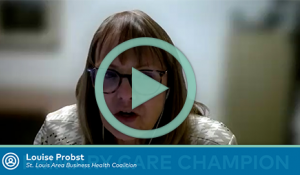News Room
August 26, 2014 | Modern Healthcare
The CMS and Oregon are stepping back from an apparent clash over how the state is paying the managed-care organizations serving Medicaid beneficiaries in its nationally watched Medicaid demonstration. State officials and leaders of Oregon'...
August 26, 2014 | University of California, San Francisco
Since the passage of the Affordable Care Act, primary care has been receiving a lot more scrutiny. In many cases across the nation, the health care system hasn’t been providing the most effective or efficient care. “We’ve had to do a bit...
August 25, 2014 | OncLive
In 2012, the federal Centers for Medicare and Medicaid Innovation (CMMI) sought to support oncologists in addressing what CMMI considered to be among the failings in cancer care— namely, fragmented care, suboptimal outcomes, high costs,...
August 20, 2014 | Politico
It was late in the afternoon on a warm Friday in early fall and Doug Sumrell was mowing the lawn outside his suburban home in Evans, Georgia. As he pushed the mower across the yard, Sumrell began to feel faint — his chest tightened and the...
August 12, 2014 | MedPage Today
When Medicaid expansion came to Louisville, Ky., it created an opportunity for a population traditionally served by public health clinics to receive healthcare through a wholly different mechanism -- and so far that mechanism appears to be...
August 11, 2014 | AAFP News
Health care policy experts have cautioned that making the transition away from a fee-for-service payment model will be a marathon, not a sprint, yet one accountable care organization (ACO) in Florida has moved quickly out of the gate. ...
August 10, 2014 | The Morning Consult
The politics of Medicaid are robust and complicated. However, the complexity of the issue shouldn’t prevent Medicaid patients from receiving timely and quality health care services – especially primary care. Supporting access to...
August 6, 2014 | AAFP News
After passing both houses of Congress with overwhelming support, legislation designed to increase medical access for military veterans who are struggling to obtain basic health care at U.S. Department of Veterans Affairs (VA) facilities...
August 5, 2014 | Brookings
It is well recognized across the health care industry that the major goals of the Affordable Care Act (ACA) include not only expanding health insurance coverage, but also improving the quality of care and the patient health care experience...
August 1, 2014 | Center for Advancing Health
The patient-centered medical home (PCMH), introduced in 2007, is a model of health care that emphasizes personal relationships, team delivery of care, coordination across specialties and care settings, quality and safety improvement, and...
July 31, 2014 | Kaiser Health News
Just six states will use their own money in 2015 to sustain the federal Medicaid pay raise to primary care doctors, which was a key provision of the Affordable Care Act intended to make sure millions of low-income people enrolling in the...
July 31, 2014 | Kaiser Health News
Just six states and the District of Columbia will use their own money in 2015 to sustain the federal Medicaid pay raise to primary care doctors, which was a key provision of the Affordable Care Act intended to make sure millions of low-...
July 25, 2014 | EHR Intelligence
Accountable care organizations (ACOs) and value-based purchasing arrangements will be responsible for the care of 130 million patients by 2017, predicts a report by Parks Associates. Accountable care will generate nearly $1 billion in...
July 23, 2014 | Brookings
Payment reform in health care is confusing, but the goal is simple: How can health care providers change their economic incentives to encourage value over volume? If you've wondered about how these new payment models work, we’re here to...
July 22, 2014 | PR Web
New study findings released today confirm that Horizon Blue Cross Blue Shield of New Jersey’s patient-centered program is working to improve the coordination of care and lower costs. The 2013 patient-centered study is the largest to date...
July 21, 2014 | Health Affairs Blog
Clinician adoption and implementation of health information technology (IT) has increased significantly since the passage of the HITECH Act in 2009. Dedicated efforts and large financial incentives have spurred innovation and motivated...
July 19, 2014 | Modern Healthcare
Dr. Bruce Bagley is president and CEO of TransforMED, a wholly owned subsidiary of the American Academy of Family Physicians, which provides guidance and support to physicians implementing patient-centered medical homes. Bagley, a family...
July 16, 2014 | FierceHealthPayer
For value-based payment programs to succeed, insurers must provide incentives for providers that involve more than financial rewards. That's because a wide range of factors, including intrinsic motivation and medical professionalism,...
July 11, 2014 | Modern Healthcare
By combining forces, solo and small-group medical practices helped generate $237 million in savings over three years in CareFirst's Patient-Centered Medical Home Program, the insurer revealed Thursday.
CareFirst, a Blue Cross and Blue...
July 10, 2014 | Reuters
In one of the largest tests of a novel way to deliver and pay for healthcare, insurer CareFirst BlueCross BlueShield announced on Thursday that 1.1 million people receiving care through its "patient-centered medical homes" last year were...
Pages
Recent Newsletters
April 1, 2022
December 20, 2021
September 30, 2021
June 30, 2021
March 30, 2021
RT @AHRQNews: #NMHM is a good time to learn about AHRQ's commitment to addressing systemic racism & its impact on the health and well-being… —
2 years 2 months ago
Don’t forget to register for @PCPCC’s April Lunch and Learn discussion happening on April 21 from 11am-12pm ET at… https://t.co/y6zrrxMJU9 —
2 years 2 months ago
"Giving patients autonomy in their care is THE key to patient engagement, and patients who are engaged participants… https://t.co/PdHZchWtwn —
2 years 2 months ago
Secondary menu
Copyright © 2024 Primary Care Collaborative



